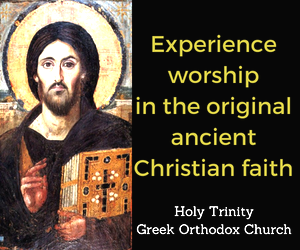The myths of Christopher Columbus’s legacy and who should take his place
For some, Oct. 10 is Indigenous People’s Day, but to others across the U.S. it’s Columbus Day. Named after Christopher Columbus, the explorer is often taught in school as the man who sailed to the West, discovered America and proved that the Earth was round.
However, that story couldn’t be farther from the truth. In reality, Columbus did neither of those nor set foot in America.
According to the truTV show Adam Ruins Everything, Columbus was nothing more than a murderer who only set sail because he was an incompetent mathematician.
Back in the Middle Ages, the concept of the Earth being round was accepted as common knowledge and Ptolemy’s “Geography,” which considered the idea of a round planet as fact, was a standard reference.
Columbus was one of those people who rejected the idea and believed the Earth was much smaller and in the shape of a pear.
After years of trying to convince the Spanish crown that his beliefs were correct and he could reach Asia (then known as the Indies) in a matter of days, King Ferdinand II of Aragon and Queen Isabella I of Castile agreed because they saw it as an opportunity to expand Spain’s trade network and spread Christianity.
When Columbus reached what is now the Caribbean, he believed he was in India and met the Indigenous peoples such as the Taino, who were very hospitable to him. However, Columbus enslaved them to force them to find gold. He eventually committed a brutal genocide against the Taino, massacring between 12 to 15 million Indigenous people during his voyages.
Amidst the genocide, Columbus only reached modern-day countries such as Cuba, Haiti and the Dominican Republic; not America.
So why did we learn the other story of Columbus? The myths that we’ve all come to know about him were perpetuated by “The Legend of Sleepy Hollow” author Washington Irving wrote Columbus’ biography in 1828. The myths became very popular when millions of Italian immigrants came to the U.S. between 1880 and 1924 and looked for an icon amidst the discrimination they experienced.
After Italian groups lobbied state legislatures to create a holiday recognizing Columbus in the early 20th century, Columbus Day became a federal holiday in 1937.
Despite the misguided heroism Italians and the U.S. have attributed to the myth of Columbus, Italians deserve to have their culture and contributions to society celebrated; just with a different historical figure.
Some better replacements for Columbus include the following:
- Leonardo da Vinci: the Renaissance artist who was also a brilliant scientist and inventor. His ideas contributed to engineering, human anatomy, mathematics and other scientific fields.
- Michelangelo: the artist who sculpted the statue of David and painted the ceiling of the Sistine Chapel.
- Marco Polo: the merchant and explorer who gave Europeans a comprehensive look of China, Persia and other Eastern countries. His writings expanded Europe’s understanding of China and Central Asia, and introduced paper money to western civilization.
- Antonio Vivaldi: the composer who is regarded as one of the best Baroque composers and his influence spread across Europe, as well as took innovative approaches to music, orchestration and violin technique.
- Dante Alighieri: the poet of the Divine Comedy who took us on an unforgettable journey through Hell, Purgatory and Heaven, creating one of the greatest works of literature.
Even though the myths of Columbus was used by Italian immigrants to show pride in their heritage, it is wrong to recognize a man for achievements that were never his and celebrate someone who committed one of the worst acts of genocide in world history.
Hopefully the U.S. will choose a different person to symbolize Italian culture and their impact on the world.







